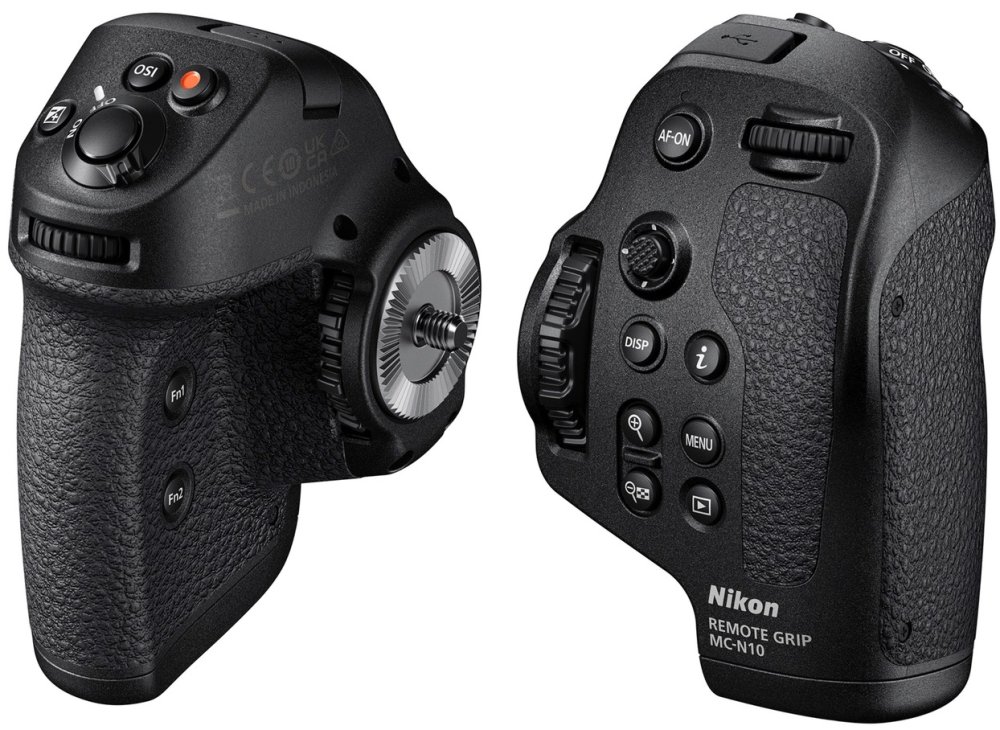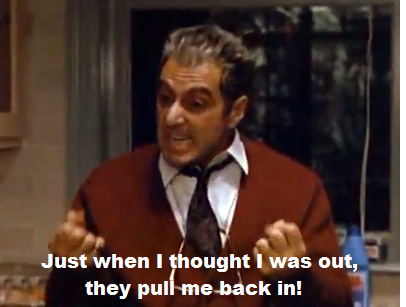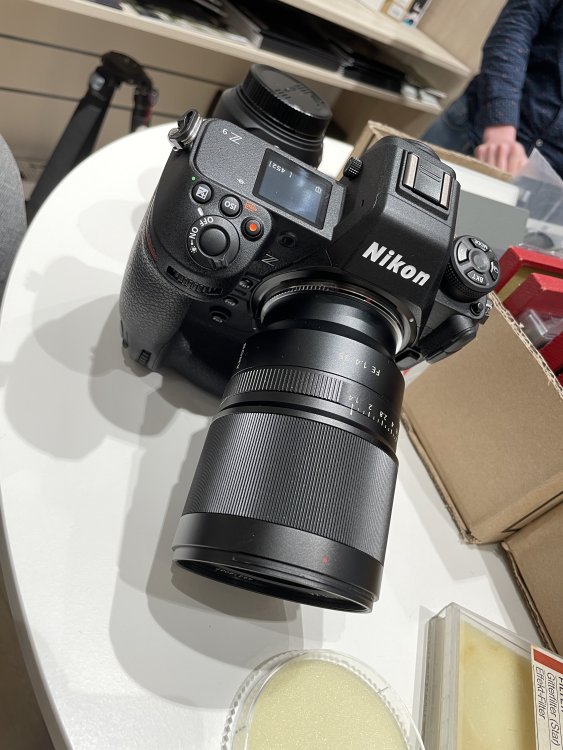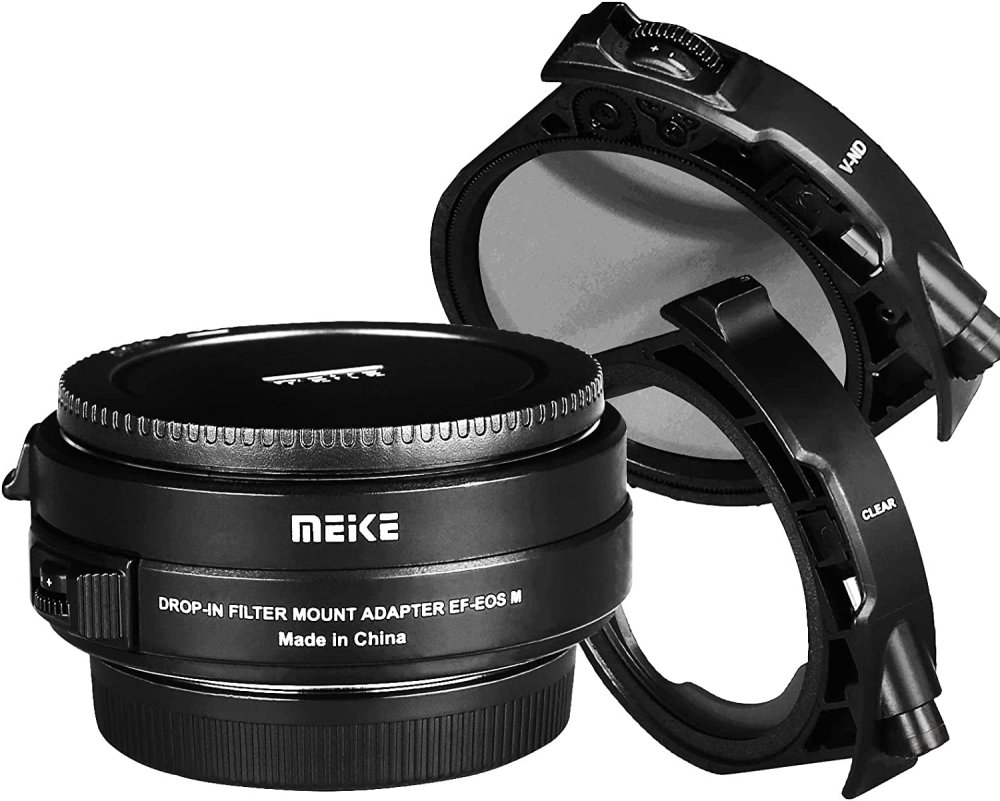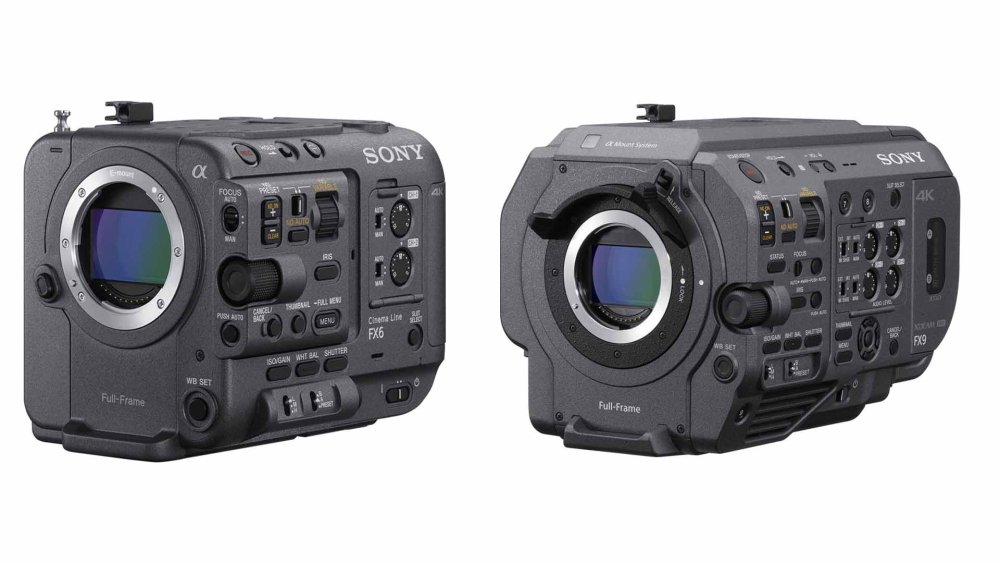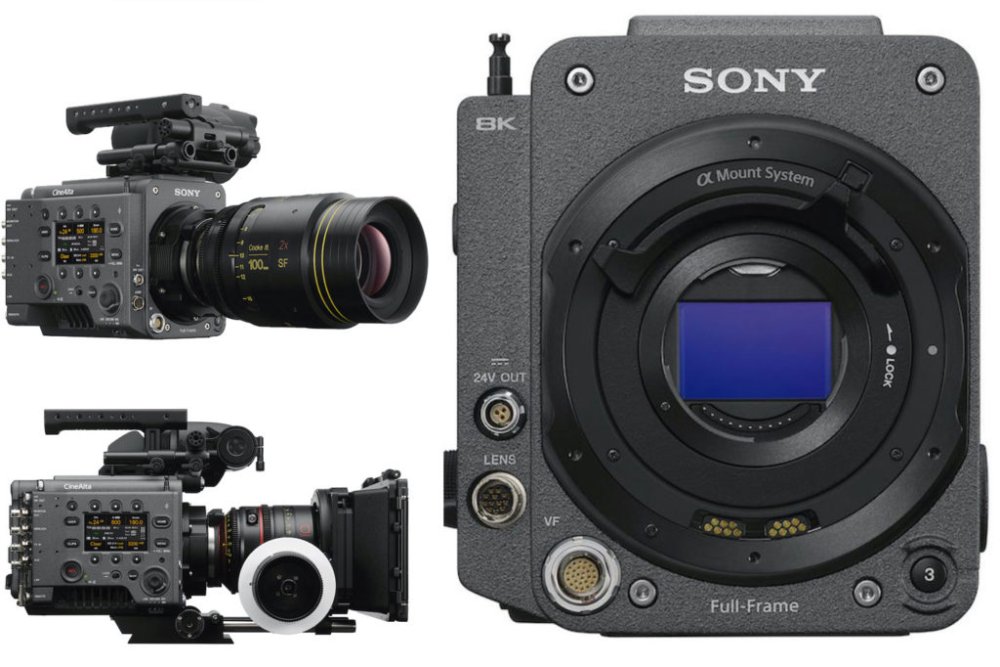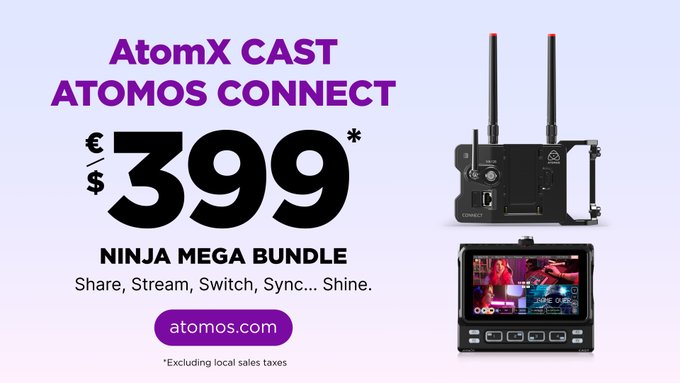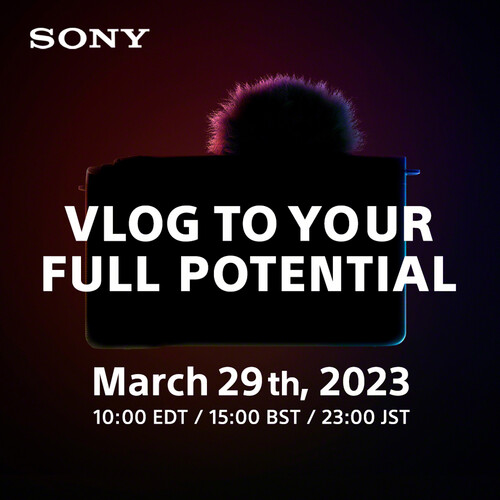-
Posts
5,964 -
Joined
-
Last visited
Content Type
Profiles
Forums
Articles
Everything posted by BTM_Pix
-
Same 2mm difference in flange distance but unfortunately it’s in the wrong direction so E to L isn’t possible. L to Z (or E) is possible though if someone had the will to do it. Ironic if the Z8 causes everyone to buy the Z9 after all!! 2mm !! It felt like my D5 in the hand as it’s roughly the same weight. That sort of weight doesn’t bother me as it’s balanced and has the right heft. Felt so familiar that I could have walked away with it, put the big glass on it and shot a game without knowing it was any different than my D4 or D5. Unfortunately, the pesky owner knows where I live so I had to hand it back.
-
One thing that might tip me into buying a used Z9 (aside from Z8 possibly not being available from stock when I go on my trip) is whether they have cut BLE timecode from the Z8 as I have a bit of commitment to that through Zoom audio recorders and now the Atomos Connect add on for the Ninja V. Hopefully it will also support the remote grip as well Fuck it, I’m getting a used Z9 aren’t I?
-
I’ve been waiting it out for a Z9 to buy as my forever camera ever since it was launched. Two things were holding me back, namely there being an actual supply of them and then me being able to go to Japan to buy a used one. I’ve been in no rush and as I’m going to Tokyo at the beginning of June and there are plenty of used ones available at MapCamera now, the time has actually come to get one. Which has coincided on me going cool on the idea. Bear in mind that I haven’t been inside a real camera shop since COVID so I’ve never actually seen a Z9 in real life but yesterday I met someone in Berlin who has one and let me have a go with it. And well… If the Z8 does indeed turn out to be a form factor reduced Z9 with a 25-30% price reduction too then I’m probably in. The Z9 form factor doesn’t bother me in the slightest coming from my heritage of D3/D4/D5 use but maybe it would be nicer to have the option of a Z8 with a battery grip to pick and choose sizes depending on what I’m doing with it. Ironically, it was the lenses that were leading me to and then away from the Z9. I have a large collection of high end F mount lenses from my pro days gathering dust so the Z9 with the FTZ was the logical way to bring them into the modern era. But I then didn’t fancy buying into the native Z lenses for when I want to have something smaller and lighter as I found them a bit expensive and not much 3rd party stuff to write home about made it worse. So in the end I decided it was time to cut the losses with the F mount and go in with L or even E mount cameras. However… The man who let me use his Z9 (you might know him, not an Uber League Swingball player or anything but knows about cameras) had something interesting on it. You have to look closely but it’s that waffa theeen Megadap E mount to Z AF adapter and it changes a lot for me. The adapter more or less gives native lens performance of E mount lenses on the Z cameras. I have a couple of E mount lenses so that is good but more importantly it opens up affordable and interesting 3rd party lenses like the Sigma’s contemporary series or primes and zooms and Tamron’s 35-150 f2/f2.8 which are now effectively available in Z mount using this adapter. This means that the Z8 can not only be viewed as baby Z9 but also as a baby Alpha 1, particularly for anyone with a decent collection of E mount lenses already.
-
It has been dismissed without prejudice which means both sides have agreed to stop all ongoing claims and counterclaim proceedings. Without prejudice means that the dismissal does not preclude the whole process from starting again in the future. One possible reading of that is that they have agreed to stop action against each other in lieu of a license payment from Nikon to RED but that RED reserve the right to start the action again should Nikon not meet these commitments. That is only one possible (but obvious) reading of it but there are many more as the claims weren’t only one way. So there is no final settlement in a formal sense (ie Nikon paying them x dollars for an infringement with the Z9) but they have settled on what looks to be a negotiated cease fire on the current actions. If the “win” for Nikon is to be able to have internal compressed RAW then it could be based on some sharing with RED of one of their own technologies as it is strongly suspected happened with Canon rather than a simple license payment. Or it could be a bit of both. If it IS purely based on a license payment then it could potentially be a “win” for other camera manufacturers as they could then apply to REF for the same. I suspect it is a case of something more mutually beneficial as I doubt Nikon we’re going this heavily into bat on behalf of the whole camera industry. The only people who really know are the ones that negotiated the ceasefire though and it will take a long time and a lot more guessing to unravel whether this goes beyond anything more than the Z9 being legally allowed to be sold with internal compressed RAW. Ironically, though, the internal RAW of the Z9 hasn’t proved to be a world beater from tests that Andrew amongst other people have reported. So, ultimately, this whole thing might well have been two bald men fighting over a comb.
-
Both sides have now filed a joint motion to dismiss the case so it’s all over. Whether this means Nikon are paying a license fee or it’s a “win”’ against the patent itself that will benefit all manufacturers is uncertain but it looks like that new Z8 might be even more compelling now. Perhaps the timing of the settlement and its launch may be more than coincidental. Full story here https://ymcinema.com/2023/04/27/red-vs-nikon-case-dismissed/
-
Mentioned this in another EOS-M thread but for anyone who missed it, Meike do an EF-M converter which has the drop in filter system. The standard kit with the Variable ND and Clear filter is €145 and I think really gives this kit an extra boost as a compact powerhouse. Albeit at almost the full cost of the camera 🙂
-
To be fair, the FX6 and FX9 do too. As per the markings on the FX9 they are using that label to indicate the camera having the Alpha mount. Its a similar story with the non-PL mount version of the Venice too.
-
Did you try adding “Cinematic vs iPhone vs ARRI vs Full Frame smash that like button buy my LUT that I created with ChatGPT should you still buy this vintage one year old camera in 2023” to your search term ? A lot of stuff gets lost because people are trying to create titles that incorporate the phrases du jour that they hope will get them up the search rankings. “Avoid these five scams when using the GH6 for stealth van life with otters” etc From what I’ve seen, the “GH6 vs xyz” is the richest seam to mine as at least you get comparative stuff against known entities like the P4K etc.
-
Your post will probably inspire a lot of people to seek out a used 5D3 and do the same. I particularly enjoyed the incorporation of what looks to be the ancient lost art of sticking it on a tripod.
-
Samyang have launched a competitor for the Tamron 35-150mm f/2-2.8 allrounder for E-Mount which but is $500 cheaper. Full details here : https://www.samyanglens.com/en/product/product-view.php?seq=621 A comparison video between the two lenses is here which gives the edge to the Samyang :
-
My iPhone 12 Mini mostly because I haven’t been shooting anything of actual purpose. I will be getting back on the horse in June and it will be with the Sigma FP.
-
Or shutter-shitting an S5ii Welcome back btw
-
You can watch the full presentation here : The three lenses are : 23mm f1.4 (APS-C) E/L (Fuji X to Follow) - $549 50mm f2 (FF) E/L - $639 17m f4 (FF) E/L - $599 A couple of interesting more additions to their compact full frame collection and their excellent f1.4 APS-C trio now becomes a quartet..... Unless of course you are an MFT user as there is no version of the new 23mm f1.4 which is a bit disappointing really.
-
Yeah, they have a lot of ZV-E10 user base who will upgrade and of course there are always new vloggers wanting to get in on the action but it does feel like it could have been probably $500 cheaper. That said, there are a lot of productivity aids to it that will make that additional $500 a good investment based on how targeted it is to the function. The fact that being based on the A7Siii then it can see in the dark will be a big draw and again something which the extra $500 could seem a reasonable price to pay. I suspect the lack of mechanical shutter will be less of a hindrance to the target market, HDMI more so but probably less of an issue than it is to many non-vloggers. The EVF situation though is made worse from what I can see on the reviews by the screen not seeming to be particularly bright. Though the AI reframing mode probably offsets that for the target market. Yep, seems to be in the 50/60p modes but OK in the regular frame rates. Depends on the situation whether anyone will be doing continuous takes of that length but what I haven't seen anything about is the recovery times ? The ZV-E10 has gained a lot of traction for vloggers whilst having similar overheating issues from what I can see so I'm guessing the ones who's shooting methods weren't impacted by that or found some mitigation (just shading the camera outside and changing the power options had a very big impact from videos I've seen) won't be as put off. Giving everyone all that camera - even at a slightly inflated price - and then making it more or less unusable outdoors would be next level gimpery from Sony !
-
A7sIIi sensor 4K60p in 4:2:2 10-bit all-intra 4K120p in a future firmware update 5 axis steadyshot S-Log 3/S-Cinetone MI Hot Shoe Mount $2,200 Watching that presentation, this camera has some very smart and practical AI features for the target market. They'll sell a boatload of them.
-
Link to the Sony official product launch stream here : Obviously, the floodgates will also be opened at 15:00 BST for the deluge of shock face thumbnail "independent reviews" too.
-
Might be niche on the surface as its primarily for live broadcast but this time limited offer might be worth considering for some of the many Ninja V/V+ owners on here. To recap about the two products (both of which house the Ninja V/V+ but obviously not simultaneously).. The AtomX Cast turns the Ninja V/V+ into a fully fledged four input switcher complete with a USB-C output for streaming input to broadcast it with your phone/laptop/ipad etc that can accept the webcam standard input (YouTube, Facebook, Skype, Teams etc etc). Full details here https://www.atomos.com/accessories/atomxcast The Atomos Connect adds a lot of connectivity utility for the Ninja V/V+ including an SDI input, WiFi6 and 1GB Ethernet for streaming and on set remote viewing, simultaneous ProRes and H265 proxy recordings (with timecode), Camera To Cloud to upload live from the camera, wireless timecode and remote control over BLE from an app. Atomos have also just announced a €99 paid upgrade to add NDI to its output so the camera can be used wirelessly within a standard broadcast protocol. Full details here https://www.atomos.com/accessories/atomos-connect On the surface, it might not seem like this bundle has much of an audience here but I think the Atomos Connect adds so much overall utility and AtomX Cast offers a whole new opportunity that its pretty transformative for the Ninja V/V+ and is a real bargain.
-
Its interesting new info though so re-post it in that thread.
-
Time will tell where it where it fits in the market but where it fits in this forum is in the existing thread for it 😉
-
That wolves are absolutely coining it and won't get out of the lair for less than £10K a day plus points?
-
Not an answer to your specific query about BRAW playing a role but here is a side by side that someone has done with the S5ii and S1H comparing moiré. Its there in both but far more pronounced in the S5ii with the suspicion that the OLPF of the S1H is the differentiator but I doubt that is the whole tale. From that test, it would be expected to be more from the S5ii but its interesting that you are seeing more with the S1H in BRAW than internal. Could be additional processing in the camera is taming it when recording internally ?
-
It apparently will be called the ZV-E or ZV-E1 and seems to essentially be an A7Siii in the rangefinder-ish body of the A7c. The following specs are from rumour sites so take with a pinch of salt but if this is accurate then it will be an interesting release. 12MP sensor from the Sony a7s III 4k 60p and 4k 120p video (no crop) Max ISO of 409,600 No pixel binning AF from a7R V, but it has even better detection New AI features Priced expected to be under $2,500 4k 120p could come later with a firmware update
-
Well, after having to put up with a family obsession with the show for years, they would likely have to pay me a significant part of the budget difference to force me to sit through a full side by side comparison but, yeah, on a brief look you can see there is more lustre for want of a better word on the movie version. Still can't see the justification in the extent of the multiplication factor though but I know zero about the nitty gritty of making movies or, indeed, the cost of walkie talkies 🙂
-

Now it is a surprise - DPReview is closing
BTM_Pix replied to Marcio Kabke Pinheiro's topic in Cameras
Archive Team appear to be on the case. There are some other individual efforts to preserve the studio shot comparison content too apparently. https://wiki.archiveteam.org/index.php/DPReview -
Word has it that the mark 2 is imminent and will apparently have the following : 50MP sensor 8K/60 6K/8K ProRes RAW (to external SSD as far as I can tell) Phase Detect AF I suppose that would take care of your AF woes and it does all that at the current price of the mark 1 then you might be flogging off more gear to get it. It might change my Z9 plans as well.


